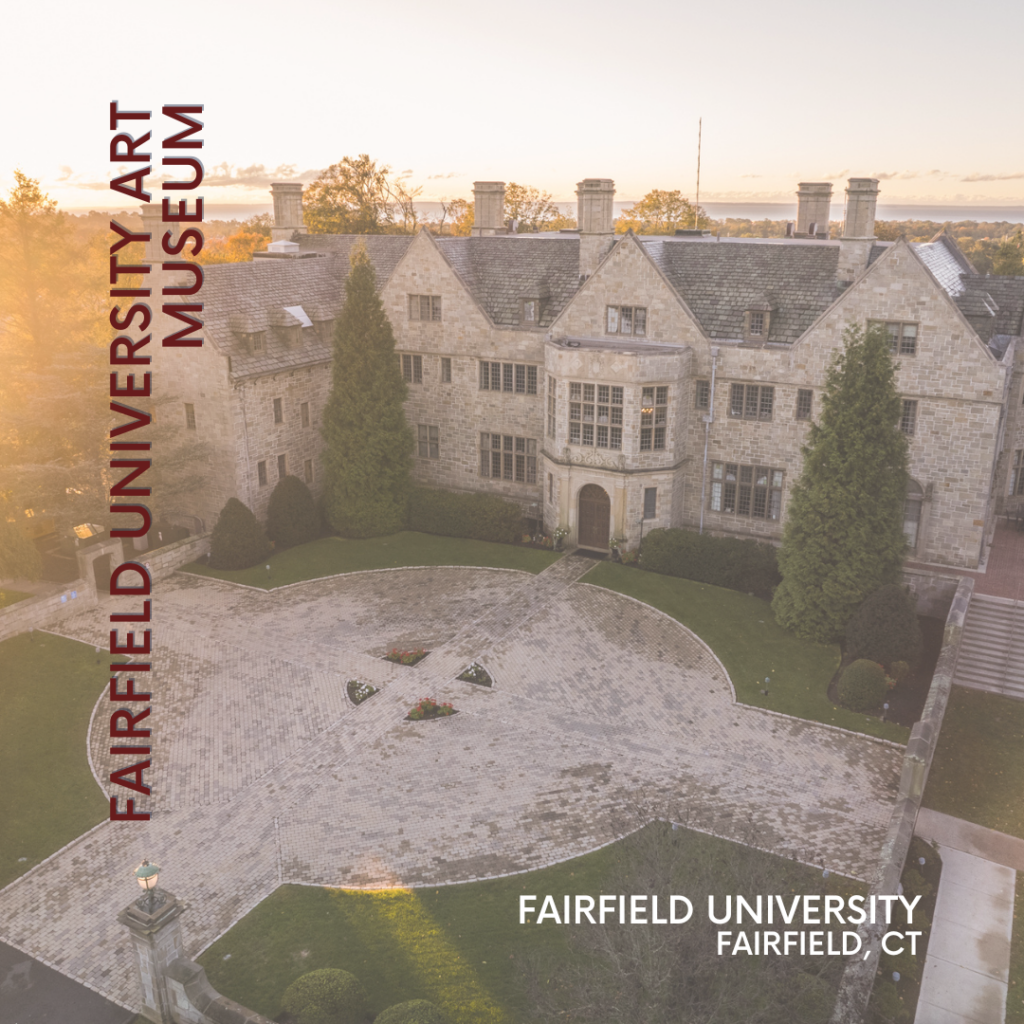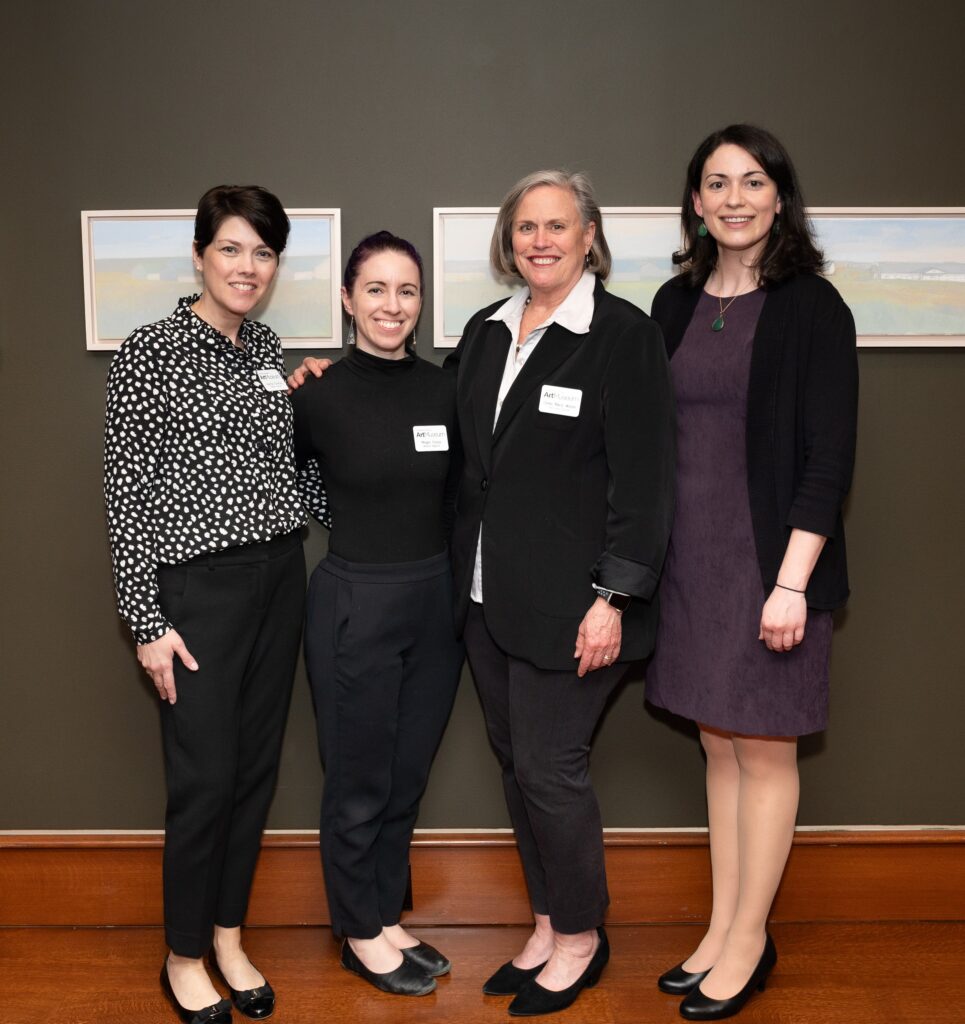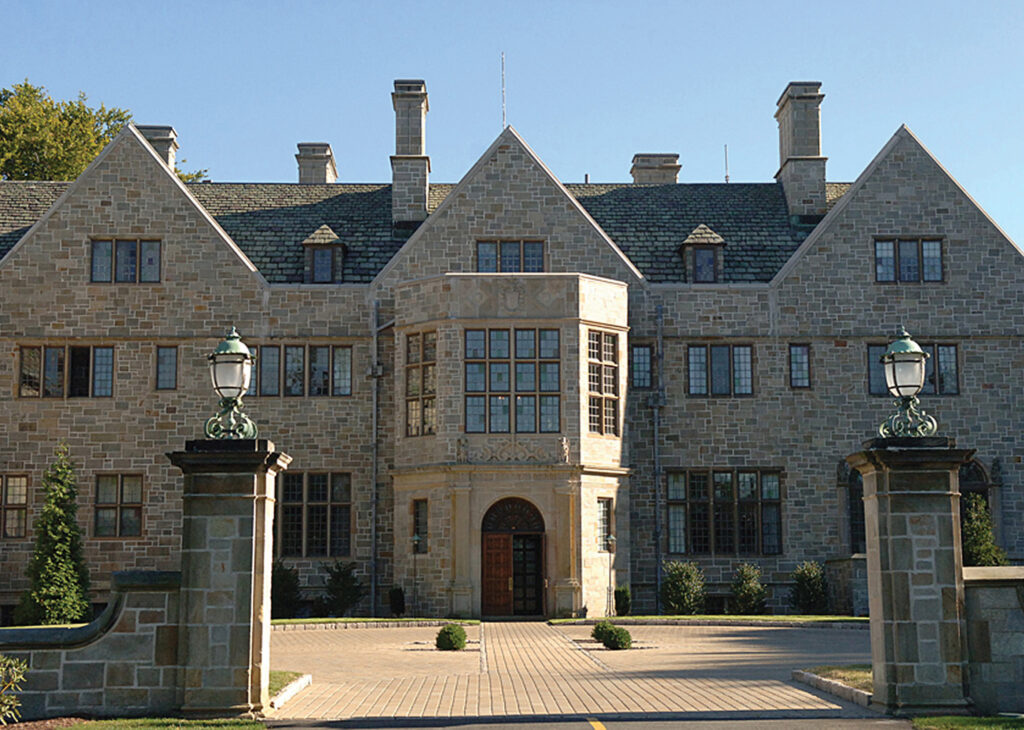The Fairfield University Art Museum (FUAM) is a dynamic space for engagement with the visual arts on the campus of Fairfield University. Publicly inaugurated in 2010, and newly accredited by the American Alliance of Museums, the Museum is a vital academic and cultural resource for both students and faculty of the University and members of the surrounding community and region, offering meaningful opportunities for first-hand experience of original works of art and their unique historical resonance. The Museum’s mission is to inspire curiosity, creativity, reflection, and dialogue through its exhibitions, programs, and the collections in its care.
As an essential component of the scholarly community at Fairfield University, the Museum advances knowledge for students from all disciplines, and offers communities of learners across Connecticut and beyond the opportunity to connect to art, ideas, and each other. In the museum’s Bellarmine Hall galleries, FUAM presents its small but choice permanent collection of European and American paintings, drawings, prints and photographs, as well as Asian, African, and South and Central American objects. The museum’s Walsh Gallery is used for special exhibitions of Modern and Contemporary art. FUAM presents exhibitions showcasing works of art in all media from across time periods and world cultures, presenting 4-6 exhibitions per year, with annual in person attendance averaging 9,000, and virtual attendance of 30,000. All of our exhibitions and programming are free and open to the public. In addition to Fairfield University students and faculty, our audiences include K-12 students in the greater Bridgeport area (a community that dramatically lacks access to cultural offerings); residents of the tri-state area of Connecticut, New York, and New Jersey; families with small children; adult learners; and seniors. We have made a strong commitment to digital engagement, making all of our exhibitions and programs available online whenever possible, and make all of our exhibition materials available bilingually in Spanish.
Video tours of our two current summer exhibitions in our two gallery spaces:
As an academic museum, what do you enjoy most about being part of your university/college institution?
There’s always something exciting happening on campus! Whether it’s faculty coming up with innovative strategies for collaborating across campus, or events at the Quick Center for the Performing Arts, there are always stimulating new ideas to be shared, people to meet, and of course, students to welcome to the museum.
What’s one thing — either industry/work-related or not — that your institution’s team learned in the past month?
We were delighted to have just received accreditation from the American Alliance of Museums. It is a two-year process, and while it requires some hard work, it is very rewarding, and completely worth the time and effort. We were surprised to learn that only around 15% of academic museums are accredited, and that only one other Jesuit University Art Museum is accredited.
You’re catering a lunch for the museum team, what is your team’s favorite food?
We’re a house divided – some of our staff say the Southwest Salad from a shop called Pronto, while others are partial to the Mediterranean wrap at a shop called ‘Wich Day.
Tell us about one of the museum’s recent exhibitions that has opened in the past year?
This past fall we had the 2nd biggest exhibition in the museum’s history (by many metrics, but most importantly, attendance, expense, and amount of team labor). In Real Times – Arthur Szyk: Artist and Soldier for Human Rights was in both of the Museum’s galleries for the entire fall semester. It turned out to be a shockingly prescient exhibition, as we could not have imagined a war would break out in the Middle East; we only knew that this talented Polish Jewish artist had a remarkable body of work created before, during and after WWII that would allow us to have difficult conversations about the Holocaust and antisemitism. We had over 4,500 in person exhibition visitors, over 35,000 views of the video tour, over 2,000 digital engagements with recorded programs, and almost 1,500 student visitors, with 28 class visits. We presented an academic symposium, we published a book and an exhibition catalogue, we presented 21 programs, and we offered over 100 tours. It was a very, very busy fall for our staff of 4 (which was reduced to 3 for much of that time).
What is your favorite way to connect with your audience?
We love welcoming students, faculty, and community members to our exhibition openings! Seeing people moving through the galleries and chatting with each other is such a pleasure (the wine and cheese doesn’t hurt, either). It’s also a great opportunity for our small staff to celebrate all of the labor, both visible and invisible, that goes into making each exhibition happen.
What books or podcasts does your team recommend?
Christine Coulson’s One Woman Show, for anyone who has ever written exhibition labels! Art Curious (podcast & book) by Jennifer Dassel is also recommended for anyone looking for an accessible way to explore art through different thematic lenses.
What are your team’s hopes for academic museums in the future?
That they continue to be appreciated for all that they bring to the students, faculty, campus community, and the broader community – and that that appreciation be demonstrated through funding and visibility (marketing materials, prospective student tours, etc.!)
Bonus: A fun fact about your museum?
Our Museum is located on the lower level of the foundational building of the university, which was originally a private home called Hearthstone Hall (so named because it had many fireplaces). Fun fact: the space where our main galleries are located were once a bowling alley!



